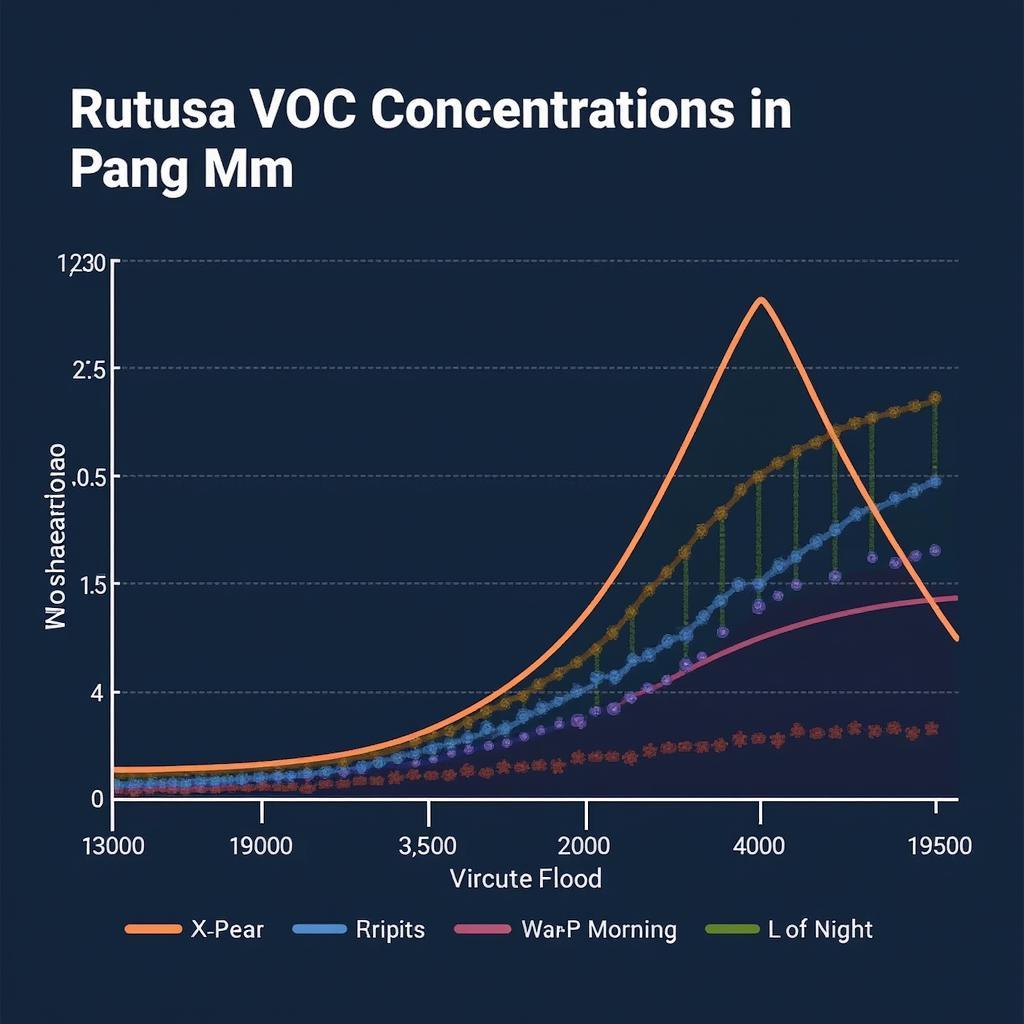The daily, weekly, and seasonal time course of volatile organic compounds (VOCs) in Barcelona is a complex issue influenced by various factors like traffic, industrial activities, and meteorological conditions. Understanding these patterns is crucial for effective air quality management and public health protection. This analysis delves into the intricate dynamics of VOC concentrations in Barcelona, exploring their fluctuations across different time scales.
Unveiling the Daily Rhythms of VOCs in Barcelona
VOC levels in Barcelona typically follow a diurnal pattern, mirroring the city’s activity cycles. Rush hour traffic contributes significantly to elevated VOC concentrations during the morning and evening commutes. During midday, when solar radiation is at its peak, photochemical reactions can transform some VOCs into secondary pollutants like ozone, further impacting air quality. Conversely, VOC levels tend to be lower overnight when human activity is reduced. This daily fluctuation highlights the direct link between human behavior and VOC emissions.
Understanding this daily rhythm is vital for implementing targeted mitigation strategies. For instance, promoting alternative transportation methods during peak hours could effectively reduce VOC emissions and improve air quality during these critical periods.
Weekly Trends in VOC Concentrations: A Closer Look
While daily patterns are prominent, weekly variations in VOC concentrations in Barcelona are also observable. Weekdays generally exhibit higher VOC levels compared to weekends, reflecting the reduced traffic and industrial activity during the latter. This difference underscores the significant contribution of anthropogenic sources to VOC emissions in the urban environment. Analyzing these weekly trends helps identify specific sources and their contribution to overall VOC levels.
For example, if VOC levels remain consistently high throughout the week, it might suggest a significant contribution from industrial emissions rather than solely traffic-related sources. This information is crucial for policymakers in developing effective and tailored air quality control measures.
Seasonal Influences on VOCs in Barcelona: A Dynamic Interplay
Seasonal variations also play a crucial role in shaping VOC patterns in Barcelona. During summer, higher temperatures and increased solar radiation accelerate photochemical reactions, leading to the formation of secondary pollutants. This period often sees higher ozone levels, which are directly linked to VOC precursors. In contrast, winter months often experience lower VOC concentrations due to reduced evaporation rates and increased precipitation, which can effectively wash out some VOCs from the atmosphere.
Understanding these seasonal changes is crucial for predicting air quality and implementing preventive measures, particularly during periods of high pollution risk.
The Impact of Meteorological Conditions on VOCs
Meteorological conditions, such as wind speed and direction, temperature, and humidity, also significantly influence VOC concentrations. Strong winds can disperse VOCs, reducing local concentrations, while stagnant air can trap pollutants, leading to higher levels. Temperature affects VOC evaporation rates, and humidity influences the formation of secondary aerosols. These complex interactions highlight the importance of integrating meteorological data into VOC analysis for a comprehensive understanding.
Conclusion: Managing VOCs in Barcelona – A Holistic Approach
Understanding the daily, weekly, and seasonal time course of VOCs in Barcelona is crucial for effective air quality management. By analyzing these temporal variations and considering the influence of meteorological factors, policymakers can develop targeted strategies to reduce VOC emissions and protect public health. This includes promoting sustainable transportation, optimizing industrial processes, and implementing early warning systems for periods of high pollution risk. This holistic approach is essential to ensure a healthy and sustainable urban environment in Barcelona.
FAQ
- What are VOCs?
- Why are VOCs important?
- How are VOCs measured?
- What are the health effects of VOC exposure?
- What are the main sources of VOCs in Barcelona?
- How can we reduce VOC emissions?
- What is the role of meteorological conditions in VOC concentrations?
Mô tả các tình huống thường gặp câu hỏi.
Các câu hỏi thường gặp liên quan đến ảnh hưởng của VOCs đến sức khỏe, nguồn gốc của VOCs và cách giảm thiểu VOCs trong không khí.
Gợi ý các câu hỏi khác, bài viết khác có trong web.
Các bài viết khác trên web có thể bao gồm thông tin chi tiết về các loại VOCs cụ thể, các quy định về chất lượng không khí và các nghiên cứu khoa học về VOCs.
